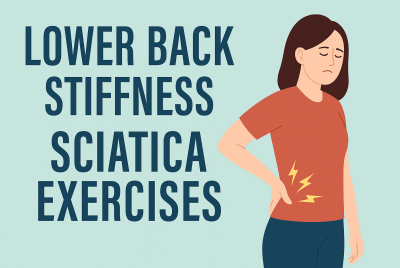Balanced Diet and Sciatica
Balanced diet and sciatica: Discover how to manage your pain through nutrition. Learn about key nutrients and foods for relief. Dive in now! Sciatica, a common condition characterized by pain radiating along the sciatic nerve, can significantly impact daily life. As someone who has experienced the challenges of managing sciatica firsthand, I understand the importance of adopting a holistic approach to alleviate symptoms and promote overall well-being. In this article, we’ll explore how a balanced diet can play a crucial role in managing sciatica and enhancing quality of life.
Introduction to Sciatica
Sciatica refers to pain that radiates along the path of the sciatic nerve, which branches from your lower back through your hips and buttocks and down each leg. It is often caused by compression or irritation of the sciatic nerve, leading to symptoms such as sharp pain, numbness, tingling, and muscle weakness in the affected leg.
Understanding the Importance of a Balanced Diet
A balanced diet is essential for overall health and well-being, providing the body with the nutrients it needs to function optimally. When it comes to managing sciatica, nutrition plays a critical role in reducing inflammation, supporting nerve health, and promoting healing.
7 Foods to Avoid If You Have Neuropathic Pain
Key Nutrients for Managing Sciatica
Certain nutrients have been found to be particularly beneficial for individuals with sciatica:
Omega-3 fatty acids are known for their anti-inflammatory properties, which can help reduce pain and inflammation associated with sciatica. Sources include fatty fish like salmon, mackerel, and sardines, as well as flaxseeds, chia seeds, and walnuts.
Vitamin D plays a crucial role in bone health and may help alleviate symptoms of sciatica. Sunlight exposure is the best natural source of vitamin D, but it can also be found in fortified foods like dairy products, eggs, and fatty fish.
Magnesium is involved in muscle relaxation and nerve function, making it beneficial for managing sciatica-related muscle spasms and pain. Good dietary sources of magnesium include leafy greens, nuts, seeds, and whole grains.
Antioxidants help protect cells from damage caused by free radicals, which can contribute to inflammation and pain. Colorful fruits and vegetables, such as berries, cherries, and spinach, are rich in antioxidants.
Fiber is essential for digestive health and may help alleviate constipation, a common side effect of certain medications used to treat sciatica. Whole grains, fruits, vegetables, and legumes are excellent sources of fiber.
Foods to Include in a Balanced Diet for Sciatica
Incorporating a variety of nutrient-rich foods into your diet can help support sciatica management:
- Fatty fish like salmon, trout, and mackerel are rich in omega-3 fatty acids, which have anti-inflammatory properties.
- Dairy products such as milk, yogurt, and cheese provide calcium and vitamin D, essential for bone health.
- Leafy greens like spinach, kale, and collard greens are high in magnesium and other nutrients beneficial for nerve health.
- Nuts and seeds, including almonds, walnuts, and flaxseeds, are good sources of magnesium and omega-3 fatty acids.
- Berries such as strawberries, blueberries, and raspberries are packed with antioxidants that help fight inflammation.
- Whole grains like quinoa, brown rice, and oats provide fiber and other essential nutrients for overall health.
Foods to Avoid or Limit
While certain foods can help alleviate sciatica symptoms, others may exacerbate inflammation and pain:
- Processed foods like fast food, frozen meals, and snacks often contain high levels of unhealthy fats, sodium, and added sugars, which can contribute to inflammation.
- Sugary snacks and drinks, including candy, pastries, soda, and fruit juices, can spike blood sugar levels and worsen inflammation.
- Trans fats found in fried foods, baked goods, and margarine have been linked to increased inflammation and chronic pain conditions.
- High-sodium foods like processed meats, canned soups, and salty snacks can lead to water retention and exacerbate inflammation.
Hydration and Its Role
Staying hydrated is essential for overall health and can also help alleviate symptoms of sciatica. Drinking an adequate amount of water throughout the day keeps the body hydrated, supports digestion, and helps flush out toxins. Opt for water, herbal tea, and other hydrating beverages over sugary drinks and excessive caffeine, which can dehydrate the body.
Meal Planning Tips for Sciatica
When planning meals for sciatica management, focus on creating balanced, nutritious meals that incorporate a variety of foods from all food groups. Aim to include lean proteins, healthy fats, complex carbohydrates, and plenty of fruits and vegetables in each meal.
Benefits of Maintaining a Balanced Diet for Sciatica
Adopting a balanced diet rich in nutrient-dense foods offers numerous benefits for individuals with sciatica:
Reduced inflammation: Anti-inflammatory foods like fatty fish, leafy greens, and berries can help alleviate pain and inflammation associated with sciatica.
Better nerve function: Nutrients like magnesium and vitamin D support nerve health and function, reducing the risk of sciatica-related symptoms.
Improved overall health and well-being: A balanced diet provides essential nutrients that support overall health, helping individuals feel better and more energized.
Incorporating Exercise with Diet for Sciatica Management
In addition to dietary changes, regular physical activity is crucial for managing sciatica and preventing future flare-ups. Exercise helps strengthen muscles, improve flexibility, and promote proper posture, reducing pressure on the sciatic nerve. Focus on low-impact activities like walking, swimming, yoga, tai chi, and Pilates, which can help alleviate pain and improve mobility without putting excessive strain on the spine.
Seeking Professional Guidance
While making dietary and lifestyle changes can be beneficial for managing sciatica, it’s essential to consult with a healthcare provider or nutritionist before making any significant changes to your diet or exercise routine. A healthcare professional can provide personalized recommendations based on your individual needs and medical history, ensuring safe and effective management of sciatica symptoms.
Real-Life Success Stories
Many individuals have successfully managed their sciatica symptoms through dietary and lifestyle changes. By adopting a balanced diet rich in nutrient-dense foods and incorporating regular exercise into their routine, they have experienced significant improvements in pain levels, mobility, and overall quality of life. Remember that every person’s journey is unique, and what works for one individual may not work for another.
Tips for Overcoming Challenges
Making dietary and lifestyle changes can be challenging, but with determination and perseverance, it is possible to overcome obstacles and achieve long-term success in managing sciatica:
Dealing with cravings: Instead of giving in to unhealthy cravings, focus on finding nutritious alternatives that satisfy your cravings without compromising your health goals.
Staying motivated: Set realistic goals, track your progress, and celebrate your achievements along the way to stay motivated and focused on your journey to better health.
Making sustainable lifestyle changes: Rather than resorting to short-term fixes or fad diets, focus on making gradual, sustainable changes to your diet and lifestyle that you can maintain over the long term.
FAQs about Diet and Sciatica
Can diet alone cure sciatica?
While diet plays a crucial role in managing sciatica symptoms, it is unlikely to cure the condition on its own. However, adopting a balanced diet rich in anti-inflammatory foods can help alleviate pain and inflammation, leading to improved quality of life.
How soon can I expect to see improvements in my sciatica symptoms with dietary changes?
The timeline for experiencing improvements in sciatica symptoms with dietary changes varies from person to person. Some individuals may notice a difference within a few weeks, while others may take longer to see results. Consistency and adherence to a balanced diet are key factors in achieving positive outcomes.
Are supplements necessary for managing sciatica through diet?
While dietary supplements can be beneficial for individuals with specific nutrient deficiencies, it’s best to focus on obtaining nutrients from whole foods whenever possible. Consult with a healthcare provider or nutritionist to determine if supplements are necessary based on your individual needs.
Can I still enjoy occasional treats while following a balanced diet for sciatica?
Yes, it’s okay to enjoy occasional treats in moderation while following a balanced diet for sciatica. The key is to focus on overall dietary patterns rather than individual food choices. Allow yourself the flexibility to indulge occasionally while prioritizing nutrient-dense foods the majority of the time.
How can I track my progress with dietary changes for sciatica management?
Keeping a food diary or journal can be a helpful way to track your dietary intake and monitor how different foods affect your sciatica symptoms. Note any changes in pain levels, energy levels, mood, and overall well-being to identify patterns and make adjustments as needed.
Balanced Diet and Sciatica – Conclusion
Incorporating a balanced diet rich in nutrient-dense foods is an essential component of managing sciatica and promoting overall health and well-being. Individuals with sciatica can reduce inflammation, support nerve health, and improve their quality of life by focusing on consuming a variety of foods that provide essential nutrients like omega-3 fatty acids, vitamin D, magnesium, antioxidants, and fiber. Remember to consult with a healthcare provider or nutritionist before making any significant changes to your diet or exercise routine, and stay committed to making sustainable lifestyle changes that support your long-term health goals.
Disclaimer
This article is for informational purposes only and is not a substitute for professional medical advice, diagnosis, or treatment. Always consult with your healthcare provider before starting a new exercise or stretching routine, especially if you have existing back or nerve conditions.
👉 Explore more:





